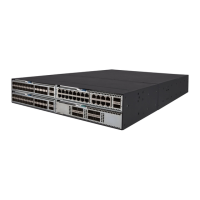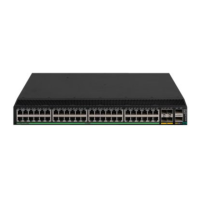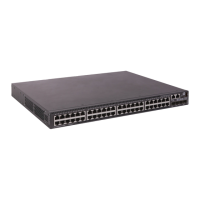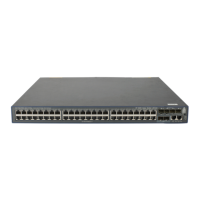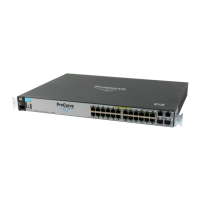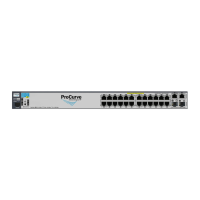293
2. Enter BGP instance view or
BGP-VPN instance view.
• Enter BGP instance view:
bgp as-number [ instance
instance-name ]
• Enter BGP-VPN instance view:
a. bgp as-number [ instance
instance-name ]
b. ip vpn-instance
N/A
3. Disable route recursion
policy control for routes
received from the specified
peer or peer group.
peer
{ group-name | ip-address
[ mask-length ] | ipv6-address
[ prefix-length ] }
nexthop-recursive-policy disable
By default, the route recursion
policy applies to routes
received from the peer or peer
group.
Enabling per-prefix label allocation
A change to the label allocation mode enables BGP to re
-advertise all routes, which will cause
service interruption. Use this command with caution.
Perform this task to enable BGP to allocate a label to each route prefix.
To enable per-prefix label allocation:
1. Enter system view.
N/A
2. Enter BGP instance view.
bgp
as-number [
instance
instance-name ]
N/A
3. Enable per-prefix label
allocation.
label-allocation-mode
per-prefix
By default, BGP allocates labels on a
per-next-hop basis.
Disabling optimal route selection for labeled routes without
tunnel information
1. Enter system view.
system-view
N/A
2. Enter BGP instance view.
bgp
as-number [
instance
instance-name ]
N/A
3. Disable optimal route
selection for labeled
routes without tunnel
information.
labeled-route ignore-no-tunnel
By default, labeled routes without
tunnel information can participate in
optimal route selection.
Configuring a large-scale BGP network
In a large network, the number of BGP connections is huge and BGP configuration and maintenance
are complicated. To simply BGP configuration, you can use the peer group, community, route

